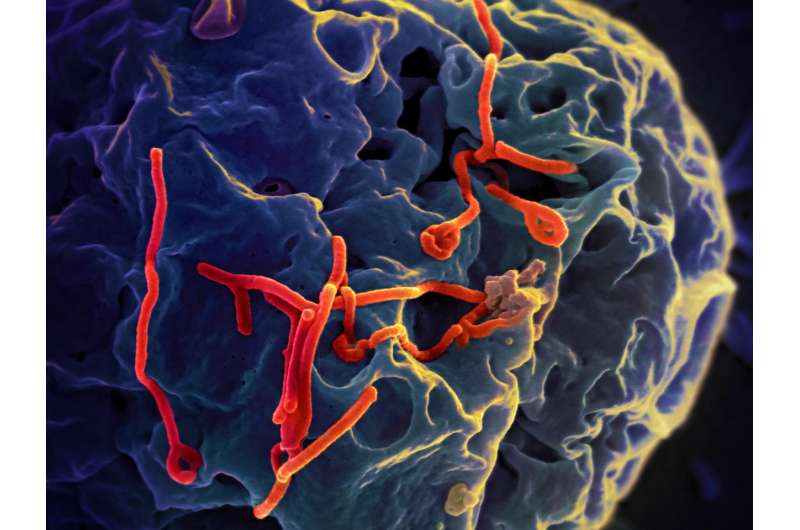Viral decoys—how the Ebola virus leads the immune system astray

A research team from Tübingen and Göttingen has described in the renowned journal Cell Reports a new mechanism how the Ebola virus escapes the immune system. The virus causes infected cells to release decoys that inactivate neutralizing antibodies and prevent immune cells from releasing important messenger molecules. These findings could lead to the development of new vaccines against hemorrhagic fever viruses.
As reported by the team led by the Tübingen virologist Prof. Michael Schindler, the glycoprotein of the Ebola virus causes cells to release small vesicles bearing the Ebola virus glycoprotein on their surface. These so-called virosomes bind antibodies directed against the Ebola virus glycoprotein and could thereby interfere with control of viral infection by the antibody response. In addition, the virosomes suppress the release of cytokines and chemokines by macrophages. Macrophages are scavenger cells that release messenger molecules and thereby coordinate the immune responses against invading viruses.
Why do most patients mount an immune response against Ebola virus despite the release of virosomes? Again, the virologists have an explanation: "The immune system has developed countermeasures against virosomes," explains Schindler. "We were able to show that another cellular protein, which plays an important role in innate immune defense, can prevent the release of virosomes."
The newly discovered properties of virosomes are of importance for basic research. In addition, they have implications for therapy and prevention. "The virosomes apparently carry functionally intact Ebola glycoprotein on their surface, but are otherwise not infectious," explains Prof. Stefan Pöh-lmann, co-author of the study and head of the Infection Biology Unit at the German Primate Center in Göttingen. "This makes virosomes attractive candidates for vaccine development."
The researchers now want to investigate whether other hemorrhagic fever viruses also release virosomes and whether they can be used for the production of vaccines.
More information: Julia Nehls et al. Release of Immunomodulatory Ebola Virus Glycoprotein-Containing Microvesicles Is Suppressed by Tetherin in a Species-Specific Manner, Cell Reports (2019). DOI: 10.1016/j.celrep.2019.01.065
















